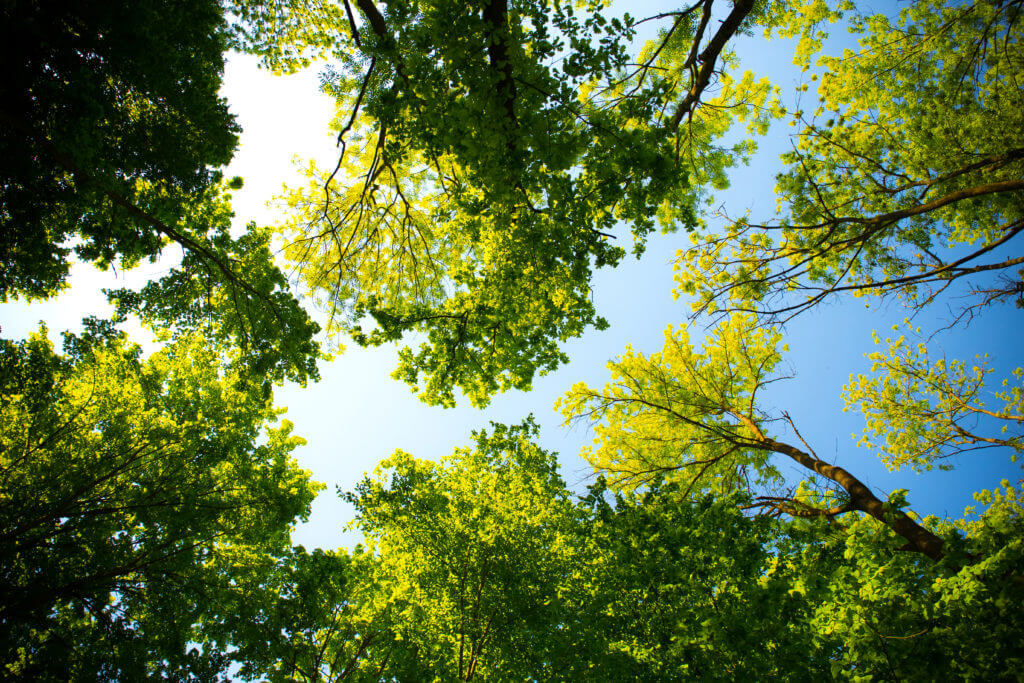The New “Old Growth”

As many Vermonters know, prior to European settlement Vermont was almost completely forested. In the 1800s about 80 percent of the state was clearcut, largely to create sheep pasture. Many of these pre-settlement forests were what we would now call “old growth”: forests that had developed without extensive disturbance for centuries.
Our modern understanding of how forests naturally grow and change is largely informed by the study of our few remnant old growth forests, and this understanding has led to modern forest management techniques that seek to emulate these natural processes. Using forest management techniques that mimic natural disturbances and create old growth-type conditions helps create forests that provide high-quality timber and maple sap in addition to great wildlife habitat, carbon sequestration and storage, clean air and clean water. The result is healthier forests—though they might not look how you’d expect.
For some reason, many people think of a well-managed forest as an area of evenly spaced trees with a completely bare understory. This couldn’t be further from the truth. Forests are dynamic systems, and death, disturbance and change are natural parts of how they develop over time. Old growth forests are generally what most people would call “messy,” with some large, ancient trees but also trees of all sizes and ages, dead standing trees (“snags”) and a lot of dead wood on the forest floor. These features develop as forests encounter natural disturbance events, from the death of a single tree to larger-scale disturbances like windstorms, wildfires and insect/disease outbreaks.
Through these disturbances forests become more diverse, which makes them healthier; diverse forests are more resilient to future natural and human-caused disturbances and will be better suited to deal with the uncertain effects of climate change. They also generally store more carbon and provide a wider range of wildlife habitat conditions than less diverse forests. As people who own, manage and appreciate forests it is critical to recognize their dynamic nature and to support the continuation of these natural processes, even if it looks messy.
Today, most of Vermont’s forests are relatively “even-aged”—dominated by a single generation of trees—recovering from being cleared for agriculture in the 1800s. In many cases the oldest trees in a forest date back to when a farmer sold off the herd, headed west, or found an easier way to make a dollar. By contrast, in Vermont’s pre-settlement forest large even-aged forests were probably somewhat rare, originating only from infrequent, large-scale natural disturbances. Because old growth forests feature a variety of conditions beyond just big trees, they often take hundreds of years to form through natural disturbance and regeneration.
While we can’t make old growth appear overnight, we can manage forests for old growth-type conditions. This includes creating “uneven-aged” forests by encouraging the growth of multiple ages of trees and modeling our management on the way that forests naturally grow and develop. “Uneven-aged management” supports irregularity and diversity rather than uniformity in the forest, harvesting individual trees and small “groups” or patches of trees, which simulate small-scale natural disturbances.
In addition, I tell loggers to leave a lot of dead wood on the ground and (even though it looks “messy”) not cut tree tops and limbs down to lay flat. Leave any dead standing or fallen trees alone and consider “girdling” a couple low-quality trees per acre to create additional snags for wildlife. I also like to leave a few trees per acre as “biological legacies” that are allowed to live out their natural life and are not managed for timber.
To muddy the waters a bit, it is also important to consider forest diversity on a landscape-scale. In addition to old growth there are other forest types, like early successional habitat, which provide unique ecological features and habitat opportunities and which are also underrepresented on Vermont’s current landscape. Our management should seek to create landscapes, not just individual properties or forests, that are diverse and healthy.
Through thoughtful forest management as described here, we can increase the overall health and resilience of our forests, in addition to their utility to wildlife and production of ecosystem services like clean air, clean water and carbon sequestration and storage. We can use management techniques modeled after the way that forests naturally grow and develop, and we can do so while extracting a local, renewable resource. What’s not to love?
Ethan Tapper is the Chittenden County forester. He can be reached via email, by phone at (802) 585-9099, or at 111 West Street, Essex Junction.
